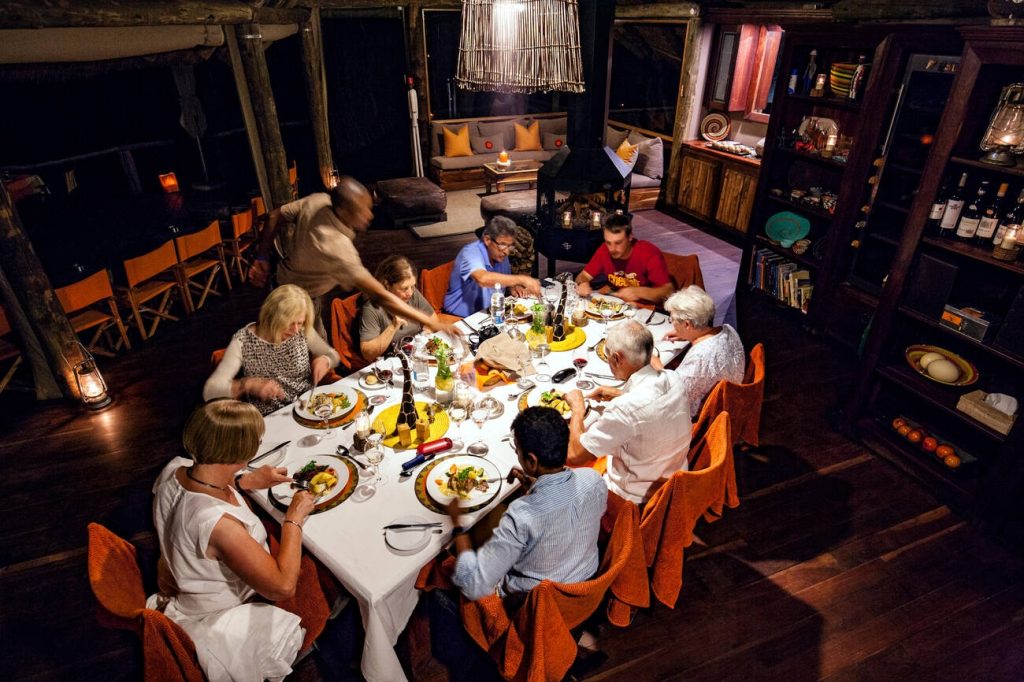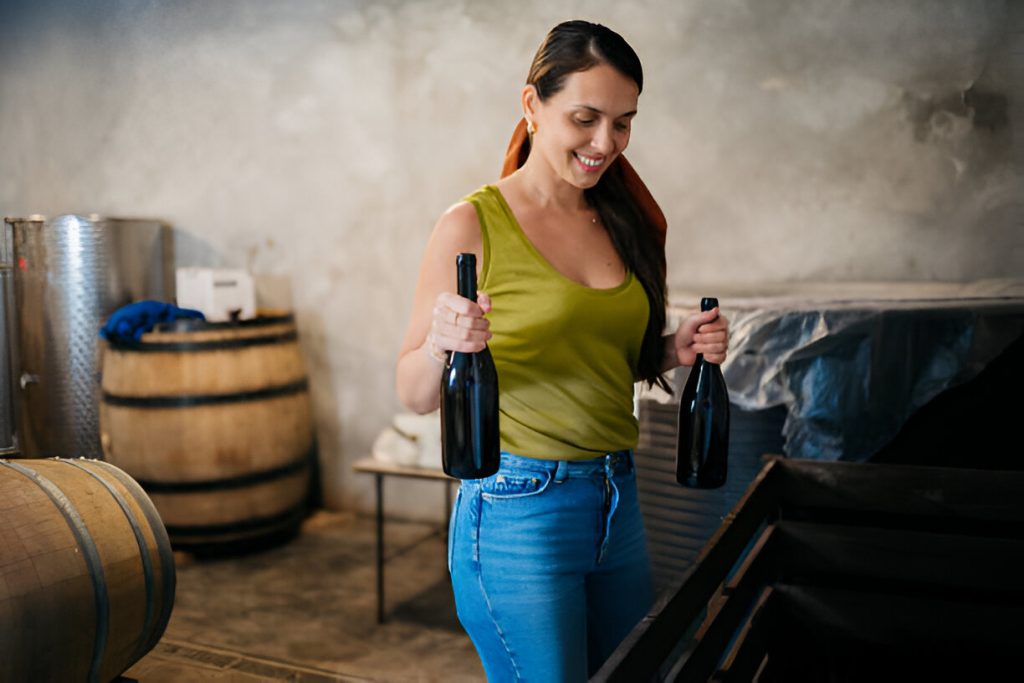Are you tired of feeling lost and confused when it comes to the world of wine? Look no further! This ultimate glossary will decode the complex language of wine and provide you with a comprehensive understanding of key terms and concepts. From production techniques to different types and regions, we’ll cover it all. Whether you want to learn about fermentation, wine tasting, or wine classifications, this article is your go-to resource. By the end, you’ll have the knowledge and confidence to navigate the world of wine with ease. So grab a glass and let’s dive in together!
Contents
Wine Production and Characteristics
Let’s explore the fascinating world of wine production and characteristics. When it comes to wine, there are several key points to consider: sweetness, acidity, tannin, alcohol, and body. These factors play a crucial role in determining the taste, structure, and overall profile of a wine. Understanding these characteristics will enhance your appreciation and enjoyment of this timeless beverage.
Sweetness
Understanding sweetness is crucial when it comes to wine production and characteristics. Here are some key points to help you navigate the world of sweetness in wine:
- Sweetness perception: The perception of sweetness in wine is influenced by the residual sugar content. Wines with higher sugar levels will be perceived as sweeter.
- Sweetness levels in different wine styles: Different wine styles can range from bone dry to intensely sweet. For example, a dry wine will have minimal residual sugar, while a dessert wine will have high levels of sweetness.
- Balancing sweetness and acidity in wine: The level of acidity in a wine plays a vital role in balancing the sweetness. A well-balanced wine will have a harmonious interplay between sweetness and acidity.
- Natural vs. residual sweetness in wines: Natural sweetness refers to the inherent sweetness of the grapes, while residual sweetness refers to the residual sugar left after fermentation. Some wines may have residual sweetness intentionally added to achieve a desired level of sweetness.
- Sweetness preferences among wine drinkers: The level of sweetness in wine is subjective and varies among individuals. Some people prefer drier wines, while others enjoy sweeter styles. It’s important to explore and discover your own preferences when it comes to sweetness in wine.
Acidity
Explore the role of acidity in wine production and characteristics. Acidity is a crucial component in wine that has a significant impact on its flavors. It provides a lively and refreshing taste, while also balancing the sweet and bitter components. Understanding the difference between acidic and low acid wines is essential in appreciating the diverse range of flavors that acidity can bring. Achieving the right acidity levels in winemaking is a delicate process that requires careful consideration and skill. Different wine regions can have varying levels of acidity, adding to the unique characteristics of wines from different parts of the world. Pairing high acid wines with the right food can elevate the dining experience, as acidity can cut through rich and fatty flavors. Lastly, acidity plays a vital role in the aging potential of wines, as it can help preserve the wine’s freshness and structure over time.
Tannin
Tannin is a key component in wine production and characteristics that contributes to its structure and mouthfeel. It is a natural compound found in grape skins, seeds, and stems, as well as in oak barrels used for aging. Here are four important aspects of tannin in wine:
- Tannin extraction: Techniques such as extended maceration and fermentation with grape skins help extract tannins, resulting in a wine with more structure and complexity.
- Tannin levels: Tannins can impact a wine’s aging potential. Wines with higher tannin levels tend to age well and develop more nuanced flavors over time.
- Tannin sources: Grapes are the primary source of tannins in wine, but oak barrels can also contribute tannins. Other sources include pips, stems, and even the use of tannin additives.
- Tannin perception: Tannins can affect the mouthfeel and flavor of wine, contributing to astringency, bitterness, and a drying sensation. They can also enhance the wine’s structure and provide a sense of balance.
Tannin management is crucial in the winemaking process. Winemakers must carefully balance tannins to achieve the desired style and ensure a pleasant drinking experience.
Alcohol
When it comes to wine production and characteristics, one important aspect to consider is the role of alcohol. Alcohol plays a significant role in the overall profile of a wine, affecting its taste, aroma, and mouthfeel. It is also crucial to understand the impact of alcohol on wine and health. Moderation is key, as excessive alcohol consumption can have negative health effects. Additionally, alcohol influences food pairing choices, as the level of alcohol in a wine can either enhance or detract from the flavors of certain foods. When it comes to aging potential, the alcohol content of a wine can contribute to its ability to age gracefully. Proper wine storage is essential in maintaining the alcohol levels and overall quality of a wine. Lastly, serving temperature is crucial in bringing out the best qualities of a wine, as alcohol can become more pronounced at higher temperatures.
Body
As you delve deeper into the world of wine production and characteristics, it is essential to understand the concept of body, which refers to the weight and thickness of a wine on the palate. The body of a wine can range from light to full, and it plays a significant role in the overall drinking experience. Here are four key aspects to consider when it comes to wine body:
- Wine body: Understanding the weight and texture of different wines.
- Wine complexity: Exploring the layers of flavors and aromas in a wine.
- Wine aging: Examining how wines develop and change over time.
- Wine structure: Analyzing the balance of acidity, tannins, and alcohol in a wine.
Wine Types and Regions
If you are an enthusiast looking to expand your knowledge of wine, it is essential to familiarize yourself with various wine types and regions. Understanding the different types of wine and the regions they come from can greatly enhance your appreciation and enjoyment of this ancient beverage. From organic vs conventional winemaking to the influence of climate on wine production, there is a wealth of information to explore.
To help you navigate the world of wine types and regions, here is a table highlighting some key concepts:
| Wine Types and Regions | Description |
|---|---|
| Organic vs Conventional Winemaking | Understanding the differences between organic and conventional winemaking methods. |
| Biodynamic Wines and their Production Methods | Exploring the holistic and ecological approach to winemaking. |
| Wine Regions of Italy | Discovering the diverse wine regions and grape varieties of Italy. |
| The Influence of Climate on Wine Production | How climate affects the characteristics and quality of wines. |
| The Rise of Natural Wines | Exploring the growing trend of minimal intervention winemaking. |
Sparkling Wines
To continue exploring the world of wine types and regions, let’s dive into the fascinating realm of sparkling wines. Sparkling wines are known for their effervescence and celebratory nature. Here are four interesting aspects to consider when it comes to sparkling wines:
- Champagne vs. Prosecco: Exploring the Differences
Champagne and Prosecco are both sparkling wines, but they differ in terms of origin, production method, grape varieties, and flavor profiles. Champagne, hailing from the Champagne region of France, is made using the traditional method, resulting in complex and elegant wines. On the other hand, Prosecco, made in Italy, is produced using the Charmat method, resulting in lighter, fruitier wines. - The Rise of English Sparkling Wine
English sparkling wine has been gaining recognition in recent years, thanks to its unique terroir and the use of traditional Champagne grape varieties. The cool climate and chalky soils in regions such as Sussex and Kent provide ideal conditions for producing high-quality sparkling wines that rival those of Champagne. - The Art of Sabrage: Opening Champagne with a Sword
Sabrage is a dramatic and impressive technique used to open a bottle of Champagne using a sword or a saber. The process involves sliding the blade along the bottle’s seam, causing the cork and neck to cleanly separate from the bottle. This tradition dates back to the time of Napoleon and adds an element of excitement to any celebration. - The Science Behind the Bubbles in Sparkling Wine
The bubbles in sparkling wine are the result of a secondary fermentation process. During this process, additional yeast and sugar are added to the base wine, creating carbon dioxide, which is trapped in the bottle. The pressure from the carbon dioxide gives sparkling wines their signature effervescence.
Sparkling Wine Cocktails: Beyond the Mimosa
While mimosas are a popular choice for brunch, there are many other delicious sparkling wine cocktails to explore. From the classic Bellini made with peach puree and Prosecco to the refreshing French 75 made with gin, lemon juice, sugar, and Champagne, the possibilities are endless when it comes to mixing sparkling wines with other ingredients.
Sparkling wines offer a world of diversity and excitement. Whether you prefer the elegance of Champagne, the fruitiness of Prosecco, or the rising stars of English sparkling wine, there is a sparkler to suit every occasion. So raise a glass and enjoy the effervescence and joy that sparkling wines bring.
Wine Tasting and Evaluation
When evaluating and tasting wine, it is important to consider the aroma, palate, and finish. The aroma of a wine, influenced by the grape variety and winemaking process, can provide valuable insights into its character and quality. Take a moment to inhale the scents wafting from the glass, and try to identify the notes of fruits, flowers, spices, or even earthy elements. This will give you a sense of what to expect when you take your first sip.
Moving on to the palate, this is where the true taste of the wine comes alive on your tongue. Take a small sip and let it coat your mouth, paying attention to the flavors and textures that unfold. Is it fruity, with hints of berries or citrus? Or perhaps it’s more savory, with notes of herbs or tobacco? Consider the balance of acidity, sweetness, and tannins, as well as the overall complexity and intensity of the wine.
Finally, focus on the finish, which refers to the lingering taste and sensations after swallowing. Does the flavor fade quickly, or does it persist on your palate? Is there a pleasant aftertaste, or any lingering bitterness? The length and quality of the finish can provide important clues about the wine’s overall balance and complexity.
Wine Terminology and Categories
Explore the diverse world of wine terminology and categories to deepen your understanding and appreciation of this beloved beverage. Wine is a complex and nuanced drink, with a rich vocabulary and a wide range of categories to explore. Here are four key aspects of wine terminology and categories that will enhance your wine knowledge:
- Wine Varietals: Familiarize yourself with the different grape varieties used in winemaking. From the bold and tannic Cabernet Sauvignon to the elegant and aromatic Riesling, understanding varietals will help you appreciate the unique characteristics of each wine.
- Wine Aging: Learn about the aging process and how it affects the flavors and structure of wine. Discover the difference between young and mature wines, and how oak aging can add complexity and depth.
- Wine Faults: Familiarize yourself with common wine faults, such as cork taint, oxidation, and volatile acidity. Understanding these faults will enable you to identify when a wine is flawed and help you make informed decisions when purchasing or tasting wine.
- Wine and Food Pairing: Explore the art of matching wine with food. Discover the principles behind successful pairings, such as balancing flavors, complementing textures, and considering regional traditions. Enhance your dining experiences by finding the perfect wine to accompany your meal.
Wine Production Techniques
Now let’s dive into the world of wine production techniques, where you’ll discover the fascinating processes behind creating your favorite varietals. Wine production techniques encompass a wide range of practices that contribute to the flavor, characteristics, and quality of wines. One important aspect is the aging potential of wines. The aging process, whether in oak barrels or in the bottle, can significantly influence the flavor profile, texture, and complexity of wines. Wines with high aging potential tend to develop secondary and tertiary flavors over time, resulting in a more nuanced and enjoyable drinking experience.
Sustainable practices have also gained prominence in the wine industry. Many winemakers are adopting environmentally friendly techniques, such as organic and biodynamic farming, to minimize the use of chemicals and preserve the natural balance of ecosystems. These practices not only benefit the environment but also contribute to the overall quality and purity of the wines produced.
In addition to well-known grape varieties, there is a whole world of unique varietals waiting to be discovered. These lesser-known grapes often have distinct qualities that can offer a refreshing alternative to more common varietals. Exploring these unique varietals allows wine enthusiasts to expand their palate and discover new flavors and aromas.
The concept of terroir, the influence of the natural environment on the taste and quality of wines, is a fundamental principle in winemaking. Factors such as soil composition, climate, altitude, and vineyard location all contribute to the character and expression of a wine. Understanding terroir is essential for appreciating the nuances and differences between wines from different regions.
Lastly, winemaking innovations continue to shape the future of wine production. From advancements in vineyard management techniques to new technologies in fermentation and aging, the industry is constantly evolving. These innovations not only improve efficiency and consistency but also allow winemakers to push the boundaries of creativity and experiment with new styles and flavors.
Wine Terminology
Delve into the world of wine terminology and uncover the language used to describe the complex characteristics and flavors of your favorite wines. Understanding wine terminology is essential for wine enthusiasts who want to fully appreciate and articulate the nuances of their wine experiences. Here are four key aspects of wine terminology that will enhance your understanding and enjoyment of wine:
- Blind tasting techniques: Blind tasting involves assessing a wine without knowing its identity. This technique allows you to focus solely on the sensory aspects of the wine, such as its aroma, taste, and texture, without being influenced by preconceived notions or biases.
- Wine aroma profiles: The aroma of a wine is a crucial component of its overall character. Wine aroma profiles can range from fruity and floral to earthy and spicy. By familiarizing yourself with different aroma profiles, you can better understand the grape varieties and winemaking techniques that contribute to these distinctive scents.
- Wine and food pairing: Pairing wine with food can elevate both the dining experience and the flavors of the wine. Understanding the principles of wine and food pairing, such as matching the intensity of flavors and considering the acidity and tannins in the wine, can help you create harmonious combinations that enhance both the food and the wine.
- Decanting benefits: Decanting is the process of pouring wine from its bottle into another container, typically a decanter. This technique allows the wine to aerate, which can soften harsh tannins, enhance aromas, and improve the overall taste and texture of the wine. Decanting can be particularly beneficial for young, full-bodied red wines.
Additionally, it is worth exploring the differences between organic and biodynamic wines. While both involve sustainable and environmentally friendly practices, biodynamic winemaking goes beyond organic methods by incorporating holistic and spiritual principles into the vineyard management process. Understanding these distinctions can help you make more informed choices when selecting wines.
Wine Regions
As you continue your journey into the world of wine terminology, it is important to delve into the fascinating realm of wine regions, where the unique characteristics of different geographical areas contribute to the diverse flavors and styles of wines. Wine regions play a crucial role in determining the quality and characteristics of a wine.
Emerging regions are those that are relatively new to the wine scene but are gaining recognition for their production. These regions often offer exciting and innovative wines that showcase their distinct terroir.
The distinction between Old World and New World wine regions is also significant. Old World regions, such as Bordeaux and Burgundy in France, have a long history of winemaking and are known for their traditional styles. New World regions, like California and Australia, are more experimental and often produce fruit-forward wines with bold flavors.
Terroir influence is a key factor in wine regions. Terroir encompasses the unique combination of soil, climate, and topography that influences the characteristics of the grapes and ultimately the wine. Different regions have different terroirs, resulting in wines with distinct flavors and aromas.
Climate and grape varieties also play a crucial role in wine regions. Certain grape varieties thrive in specific climates, and different regions are known for producing wines from specific grape varieties. For example, Champagne in France is known for its sparkling wine made from Chardonnay, Pinot Noir, and Pinot Meunier grapes.
Lastly, wine regions offer ample opportunities for wine tourism. Visitors can explore vineyards, visit wineries, and even participate in wine tastings and educational sessions. Wine regions provide a unique and immersive experience for wine enthusiasts to learn more about the production process and appreciate the beauty of the vineyards.
Wine Classification
Understanding wine classification is essential for wine enthusiasts looking to navigate the vast world of wines and make informed choices based on quality and style. Here are four key aspects of wine classification that will enhance your understanding and appreciation of this fascinating subject:
- Old World vs. New World: Traditional wine regions, such as France, Italy, and Spain, have a long history of classification systems that are based on factors like terroir, grape varieties, and winemaking techniques. In contrast, emerging wine regions like Australia, New Zealand, and the United States often have more flexible classification systems that focus on grape varieties and regional characteristics.
- Fine Wine vs. Everyday Wine: Fine wines are typically classified based on their exceptional quality, unique characteristics, and aging potential. These wines often come from prestigious vineyards, are made using traditional methods, and command higher prices. Everyday wines, on the other hand, are classified as more affordable and approachable options for everyday enjoyment.
- Single Vineyard vs. Blended Wines: Single vineyard wines are made from grapes sourced from a specific vineyard, showcasing the unique characteristics of that particular site. They often exhibit a sense of place and express the terroir of the vineyard. Blended wines, on the other hand, are made by combining grapes from multiple vineyards, creating a more balanced and consistent flavor profile.
- Indigenous Grape Varieties: Wine classification also encompasses the preservation and celebration of wines made from native grape varieties. These varieties are often specific to certain wine regions and play a crucial role in defining the identity and character of the wines produced there. Understanding and appreciating these indigenous grape varieties adds depth and richness to your wine knowledge.
Wine Evaluation
Explore the key aspects of wine evaluation to enhance your understanding and appreciation of the complex world of wines. Wine evaluation involves the careful assessment of various elements that contribute to the overall quality and character of a wine. One important aspect of wine evaluation is the identification of wine flaws and faults. These can include off-putting aromas and flavors such as cork taint, oxidation, or excessive levels of volatile acidity. By being able to detect these flaws, you can avoid purchasing or consuming wines that may not meet your expectations.
Another crucial aspect of wine evaluation is wine scoring. This is a method used to assign a numerical value to a wine based on its quality and characteristics. Wine scoring systems vary, but they often take into account factors such as aroma, taste, balance, complexity, and overall enjoyment. Scores can range from 80-100, with higher scores indicating better quality wines.
The assessment of wine aroma is also an important part of wine evaluation. Aroma refers to the scent or smell of a wine, which can be influenced by factors such as grape variety, winemaking techniques, and aging. Aromas can range from fruity and floral to earthy and spicy, and they greatly contribute to the overall sensory experience of drinking wine.
Lastly, wine aging is a critical element in evaluating wine. Some wines are meant to be enjoyed young, while others benefit from aging, allowing them to develop more complex flavors and aromas over time. The aging process can soften harsh tannins, integrate various components of the wine, and enhance its overall balance and complexity. Understanding how a wine evolves with age can greatly enhance your appreciation and enjoyment of it.




